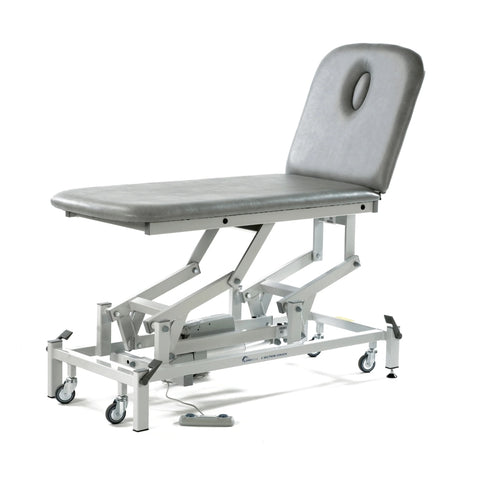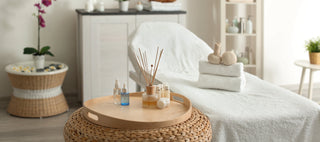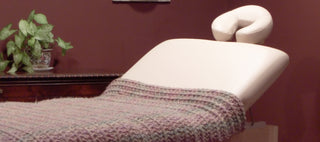From swivel to locking, hard to soft, choosing the right castors can significantly impact the functionality and usability of a massage table. In this guide, we'll delve into the various types of castors used for massage tables and their properties to help you make an informed decision.
Understanding Castors For Massage Table
Castors are wheel-mounted mechanisms that enable smooth movement and maneuverability. They consist of a wheel, housing, and mounting mechanism, designed to support and transport heavy objects with ease. When it comes to massage tables, castors play a crucial role in enhancing portability and flexibility. They allow therapists to adjust their setup effortlessly and accommodate diverse client needs.
1. Swivel Castors
Swivel castors are characterised by their ability to rotate 360 degrees, providing maximum maneuverability and flexibility. These castors allow massage tables to navigate tight spaces and corners with ease, making them ideal for crowded or compact environments. The swiveling motion enables therapists to position the table precisely without lifting or adjusting its orientation manually.

Moreover, swivel castors come in various sizes and materials to suit different floor surfaces and weight capacities. Whether working on carpet, hardwood, or tile, practitioners can find swivel castors that offer smooth and seamless movement without causing damage to the flooring. Additionally, swivel castors with ball bearings ensure quiet operation, minimizing distractions during massage sessions.
2. Locking Castors
Locking castors provide stability and security by immobilising the massage table in place once positioned. These castors feature a locking mechanism that engages with a simple foot pedal or lever, preventing unintended movement during treatments. Locking castors are essential for ensuring client safety and therapist confidence, especially during procedures that require precise positioning or pressure application.

Furthermore, locking castors come in both single-wheel and dual-wheel configurations, offering varying levels of support and weight capacity. Dual-wheel locking castors distribute the table's weight more evenly, reducing the risk of tipping or instability, particularly with heavier massage tables. Whether performing deep tissue massages or delicate therapies, therapists can rely on locking castors to provide a secure foundation for their practice.
3. Hard Floor Castors
Hard floor castors are designed specifically for smooth surfaces such as hardwood, laminate, or tile flooring. These castors feature a smooth, non-marking wheel surface that glides effortlessly across hard floors without leaving scratches or scuff marks. Hard floor castors often incorporate soft treads or rubberized surfaces to enhance traction and grip, minimizing slippage on slick surfaces.

Additionally, hard floor castors typically have a lower profile and reduced rolling resistance compared to their carpet counterparts. This allows for smoother and quieter operation. Therapists can rely on hard floor castors whether rolling the massage table into position or adjusting its placement between sessions. They help maintain floor integrity and preserve the aesthetic appeal of their practice space.
4. Carpet Castors:
Carpet castors are specially designed to navigate soft surfaces such as carpet or rugs with ease. These castors feature a wider wheel diameter and tread pattern optimised for traction and stability on carpeted floors. Carpet castors may incorporate larger wheel sizes or deeper treads to prevent sinking or resistance when rolling the massage table over plush carpeting.

Moreover, carpet castors often utilize materials such as nylon or polyurethane for enhanced durability and longevity. These materials are resistant to wear and tear from repeated use on carpeted surfaces, ensuring consistent performance and reliability over time. Whether operating in a home studio or commercial spa, therapists can trust carpet castors to provide smooth and seamless movement across carpeted floors.
5. Dual-Purpose Castors:
Dual-purpose castors offer versatility and convenience by providing compatibility with multiple floor types. These castors feature a hybrid design that combines elements of both hard floor and carpet castors, allowing them to transition seamlessly between different surfaces. Dual-purpose castors may incorporate adjustable treads or interchangeable wheels to accommodate varying floor conditions.
Additionally, dual-purpose castors often feature a universal mounting mechanism. This allows for easy installation and compatibility with a wide range of massage tables. Therapists can rely on dual-purpose castors whether moving between treatment rooms or transitioning between different floor surfaces. They provide consistent performance and adaptability in any environment.
Conclusion
When it comes to selecting castors for massage tables, practitioners have a variety of options to consider, each with its unique properties and benefits. Whether prioritising maneuverability, stability, or floor compatibility, there's a castor type to suit every preference and requirement. Understanding the differences between various castors and their applications empowers therapists to make informed decisions. This knowledge enhances the mobility, functionality, and usability of their massage tables. Ultimately, it leads to an improved overall client experience and satisfaction.











